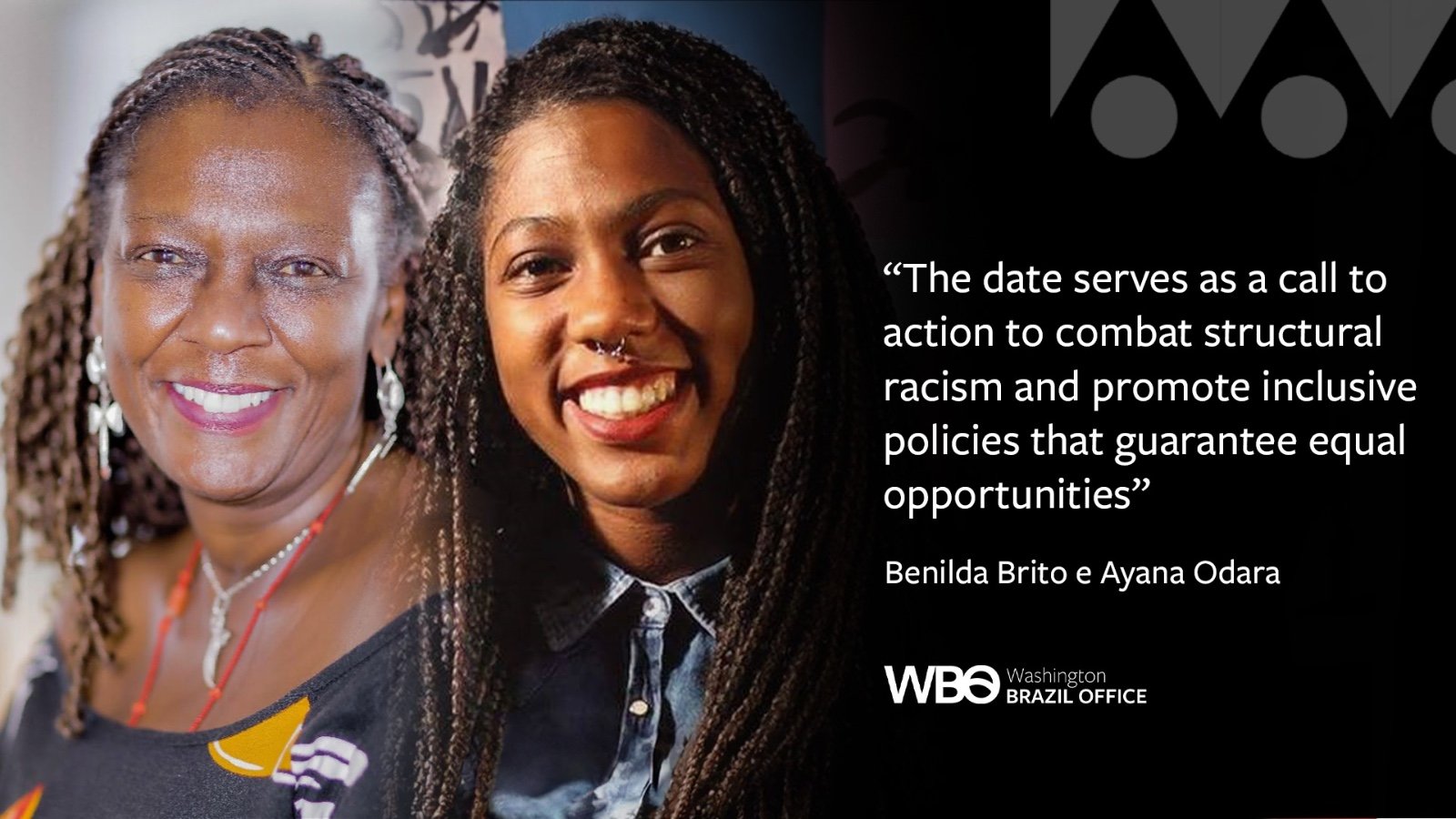Latin American and Caribbean Black Women's Day: Who are We Talking About?
Benilda Brito is a Black woman, mother, lesbian, Axé, quilombola and griot at Múcua Consultoria. Ayana Odara de Brito is a Black woman, public manager, intersectionality researcher and daughter of Benilda Brito. This article was written for issue 127 of the WBO weekly newsletter, dated July 26, 2024. To subscribe to the newsletter, simply enter your email in the form at the footer of the article.
This article is dedicated to Terezas, Donas Valdetes and Aunts Mercês, Black Women of the world.
Among the various themes we have in common, our first article together talks about ourselves: mother and daughter, two Black women from different generations. Yes! We weave together here a story about affection, ancestry, and identity.
In 1992, Black Latin American and Caribbean women gathered in the city of Santo Domingo, in the Dominican Republic at the First Meeting of Black Latin American and Caribbean Women to give visibility to racism, violence, and sexism that do not respect geographical limits and plague brutally the lives of Black women around the world. This meeting made history and, already in 1992, the United Nations recognized July 25th as the International Day of Latin American and Caribbean Black Women. The tribute at that time was paid to quilombola Tereza de Benguela, who led Quilombo do Quariterê, in the current state of Mato Grosso, with mastery, a sense of justice and strategy, shortly after the death of her husband. Still feeling the absence of love, she did not allow pain to overcome her, and her inclusive leadership is recognized throughout history.
In Brazil, then President Dilma Rousseff sanctioned Law No. 12,987/2014, which places this date on the official Brazilian calendar. And since 2016, Belo Horizonte City Hall has made the date official as Municipal Black Women’s Day “D. Valdete da Silva Cordeiro’ – a name that pays homage to an important social and political activist in the city, who influenced and still influences the lives of thousands of people from Belo Horizonte. D. Valdete, from Alto Vera, on the outskirts of Belo Horizonte, observed with concern how racism, violence, and social inequalities increasingly sickened Black women in her community, increasing their consumption of alcohol and medication against depression. She beautifully organized several conversation circles and opted for corporeality and orality as a cure. She created the Grupo Meninas de Sinhá, where Black women from their 50s until their 80s and over dance in circles with full skirts and sing about their pain, victories, and resistance. She passed away in 2014, but her legacy is still alive and well.
It was the Minas Gerais singer Milton Nascimento who narrated the daily life of our quilombo, Quilombo do Açude in Serra do Cipó in Minas Gerais in the song “Casa Aberta,” in 2002. The words sung remind me of my childhood, washing pots and clothes in the stream, watching Grandma Benigna, Mom Zaira and my aunts and cousins. There, I learned and experienced another form of political and social organization – the practice of good living, Black feminism, and collective care through plants, food and parties. The vivacity and survival strategies of my elders in the face of all the challenges imposed by racism, sexism, scarcity, made our childhoods true practices of love. From them, I learned what I know today and live with other women and our sons and daughters. To this day, the drum played by Tia Mercês, matriarch of our Quilombo do Açude, echoes denunciations of violations, agendas of historical political demands for us, Black women, but also rhythms of visibility of Black women in spaces of political debate and decision-making, of care, affection, rewriting narratives, and building a political project of a decent life for Black women.
“At the open house
It's party night
Geralda, Helena, Flor dance
At the riverside
I listen to Ramiro
Dona Mercês plays the drum”
Despite advances, Black women still face significant inequalities in areas such as access to education, the job market, health, and social justice. The date serves as a call to action to combat structural racism and promote inclusive policies that guarantee equal opportunities.
That's why we marched in 2015, and we will return in 2025, with one million women in the streets. There is still a long way to go for the world to learn the strategies of Black women, leadership strategies, to guarantee spaces of love and life. Gratitude to our ancestors. As it is taught in our Quilombo: “The needle pulls the thread.”

